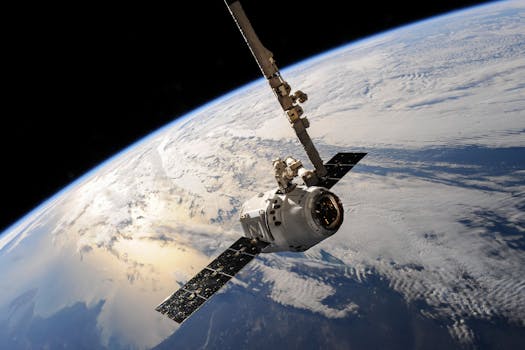The Future of Satellites: Revolutionizing Global Connectivity
The future of satellites is poised to revolutionize global connectivity, enabling faster and more reliable communication services. With advancements in space technology, satellites are becoming increasingly important for a wide range of applications, from navigation and communication to weather forecasting and Earth observation.

The Future of Satellites: Revolutionizing Global Connectivity
The future of satellites is poised to revolutionize global connectivity, enabling faster and more reliable communication services. With advancements in space technology, satellites are becoming increasingly important for a wide range of applications, from navigation and communication to weather forecasting and Earth observation. The use of satellites is expected to play a crucial role in bridging the digital divide, providing internet access to remote and underserved communities around the world.
Satellites have been in use for several decades, but recent advancements in technology have made them more efficient, cost-effective, and accessible. The development of smaller, lighter, and more powerful satellites has enabled the launch of large constellations of satellites into low Earth orbit, providing global coverage and enabling a wide range of services. The use of satellites is also becoming more democratized, with smaller companies and organizations launching their own satellites and providing innovative services.
Advancements in Satellite Technology
Several advancements in satellite technology are driving the growth of the satellite industry. One of the key developments is the use of reusable rockets, which has significantly reduced the cost of launching satellites into space. The development of electric propulsion systems has also improved the efficiency and lifespan of satellites, enabling them to operate for longer periods of time and reducing the need for costly replacements.
Another significant advancement is the use of advanced materials and manufacturing techniques, which has enabled the production of smaller, lighter, and more powerful satellites. The use of 3D printing and other digital manufacturing techniques has also reduced the production time and cost of satellites, making them more accessible to a wider range of organizations and companies.
Applications of Satellites
Satellites have a wide range of applications, from navigation and communication to weather forecasting and Earth observation. The use of satellites is critical for providing global positioning services, enabling accurate navigation and mapping. Satellites are also used for communication services, providing internet access, voice, and data services to remote and underserved communities.
The use of satellites is also important for weather forecasting and Earth observation. Satellites provide critical data on weather patterns, enabling meteorologists to predict weather conditions and issue warnings for severe weather events. Satellites are also used for Earth observation, providing data on climate change, deforestation, and other environmental issues.
Challenges and Opportunities
Despite the many benefits of satellites, there are also several challenges and opportunities that need to be addressed. One of the key challenges is the growing problem of space debris, which poses a significant risk to the operation of satellites and other spacecraft. The development of sustainable and responsible practices for the use of space is critical for ensuring the long-term viability of the satellite industry.
Another challenge is the need for regulatory frameworks that support the growth of the satellite industry. The development of clear and consistent regulations is critical for enabling the use of satellites and ensuring that they are used in a safe and responsible manner. The use of satellites also raises important questions about privacy and security, and the development of robust security protocols is critical for protecting sensitive data and preventing cyber threats.
Despite these challenges, the future of satellites is bright, with many opportunities for growth and innovation. The use of satellites is expected to play a critical role in bridging the digital divide, providing internet access to remote and underserved communities around the world. The development of new technologies and services is also expected to drive growth in the satellite industry, enabling new applications and use cases that we cannot yet imagine.






